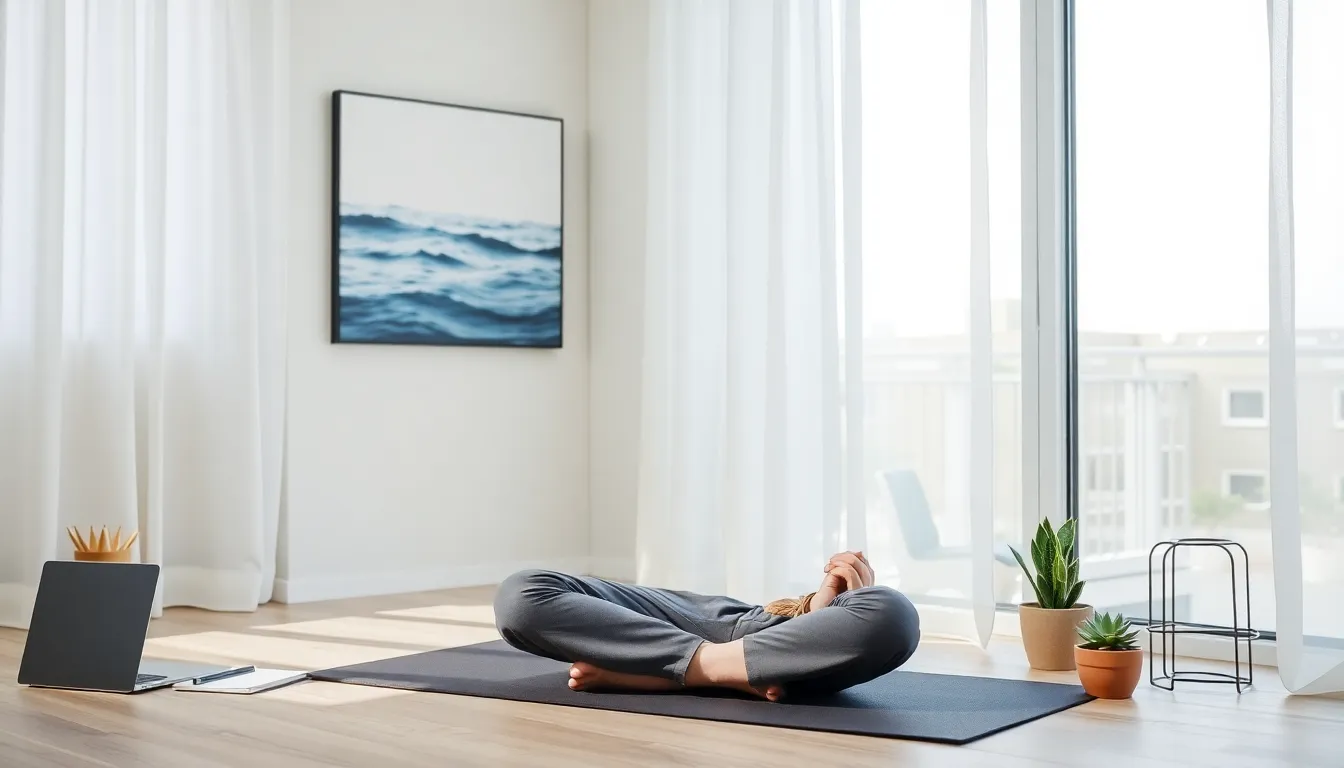Table of Contents
ToggleIn a world buzzing with distractions and screens demanding attention, the art of soft gaze practice offers a refreshing escape. It’s not just about staring blankly into space; it’s a mindful technique that invites calmness and connection. Imagine gazing at your surroundings with a gentle focus, letting go of the chaos while inviting clarity. Sounds dreamy, right?
What Is Soft Gaze Practice?
Soft gaze practice serves as a mindful technique promoting tranquility and connection to one’s surroundings. This approach counters modern life’s distractions and enhances clarity through gentle observation.
Definition and Origin
Soft gaze practice involves consciously relaxing the eyes while softly focusing on the environment. This technique encourages participants to observe details without straining to see. Originating from mindfulness traditions, it draws from the concept of soft focus in photography, emphasizing a deeper engagement with one’s surroundings. Practitioners often report increased awareness and a sense of calm that stems from gentle observation.
Key Principles of Soft Gaze
Central to soft gaze practice is the art of relaxation. Relaxed visualization allows individuals to absorb their environment without tension. Mindful observation plays a crucial role. This involves noticing colors, shapes, and movements without judgment. Intentional breathing enhances the experience, promoting inner peace. Additionally, adopting a non-distracted mindset aids in enhancing focus. By applying these principles, participants cultivate a calming presence in their daily lives, transforming how they engage with the world.
Benefits of Soft Gaze Practice

Soft gaze practice offers various advantages for both mental and physical well-being.
Mental Health Benefits
Practicing soft gaze can reduce stress by fostering a sense of calm. Participants report increased clarity in thought and improved emotional regulation. Observing the environment without judgment allows for a break from negative thought patterns. Such mindfulness contributes to greater focus and presence. Studies indicate that regular practice can decrease symptoms of anxiety and depression, enhancing overall mental health. It cultivates a positive mindset, making challenges seem more manageable.
Physical Well-Being
Engaging in soft gaze practice relieves eye strain often caused by screens. Relaxing the eyes reduces tension in the surrounding muscles. Improved eye health contributes to overall physical comfort. Participants often experience lower blood pressure, as relaxation naturally slows heart rate. Breathing deeply while observing surroundings can enhance oxygen flow, supporting bodily functions. Many find that practicing soft gaze leads to better posture by promoting a more relaxed state.
How to Implement Soft Gaze Practice
Implementing soft gaze practice involves specific techniques suited for different skill levels. Beginners can start with simple approaches that establish a foundation for deeper awareness.
Techniques for Beginners
Begin by finding a comfortable and quiet space. Focusing softly on a point within the environment encourages relaxation. Relax the eyes and take intentional breaths while observing colors and shapes. It’s important to maintain a gentle awareness without harsh judgments. Regular practice, even for a few minutes each day, builds familiarity with this technique. Over time, these sessions enhance comfort with soft gaze. She should aim for consistency to foster greater mindfulness.
Advanced Techniques
Advanced practitioners can expand their soft gaze practice by integrating movement. Observing nature while walking cultivates awareness to subtle changes in the environment. Adopting different angles or perspectives enhances visual exploration. Engaging multiple senses during soft gaze sessions strengthens overall mindfulness. Employing visualization during this practice adds another layer of depth, creating a more immersive experience. Integrating soft gaze into daily activities allows deepening the practice, transforming routine moments into opportunities for mindfulness. Consistency remains key in reaping these substantial benefits.
Common Misconceptions
Many misunderstandings surround soft gaze practice, leading to confusion about its purpose and benefits. Participants often believe it requires extensive training; however, it focuses on simplicity and relaxation. Some might think using a soft gaze leads to a loss of focus or distraction, but in reality, it enhances awareness of the environment. This technique encourages observation of details without strain or pressure.
Misunderstandings About Soft Gaze
Several common misconceptions exist about soft gaze practice. Individuals may think it’s merely a technique for relaxation, overlooking its mental and physical benefits. Others imagine it solely as a method for improving vision or eye health, rather than appreciating its role in fostering mindfulness.
Debunking Myths
Numerous myths about soft gaze practice affect how people approach it. Many assume it requires specific settings or conditions to be effective, but it can be practiced anywhere. Some also believe that results occur instantly; however, regular practice gradually builds benefits over time. It’s crucial to recognize that these perceptions can inhibit individuals from experiencing the full potential of soft gaze practice.
Soft gaze practice offers a simple yet profound way to reconnect with the world around us. By fostering a gentle awareness of one’s environment, individuals can cultivate a sense of calm and clarity that counters the chaos of daily life. The benefits extend beyond mental well-being to physical comfort, making it a holistic approach to enhancing overall health.
Incorporating this practice into daily routines can transform mundane moments into opportunities for mindfulness. As individuals embrace soft gaze practice, they’ll likely find themselves more present and engaged, allowing for a richer experience of life. With consistent practice, the gradual accumulation of benefits can lead to lasting improvements in both mental and physical states. It’s a journey worth embarking on for anyone seeking tranquility in today’s fast-paced world.







